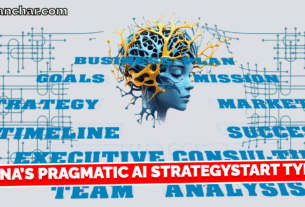In today’s interconnected world, artificial intelligence (AI) has become a transformative force across industries. From healthcare and finance to manufacturing and entertainment, AI has revolutionized how we live and work. However, its growing prevalence has also introduced new challenges, especially in the realm of cybersecurity.
As AI technologies advance, they not only bolster security measures but also empower cybercriminals with sophisticated tools, necessitating a proactive and adaptive approach to safeguarding digital ecosystems.
The Role of AI in Enhancing Cybersecurity
AI has become a powerful ally in the fight against cyber threats. Organizations are leveraging AI-driven systems to identify, mitigate, and respond to security risks in real time. Key contributions of AI to cybersecurity include:
- Anomaly Detection: Machine learning algorithms excel at recognizing unusual patterns and anomalies in network traffic, helping to identify potential threats that might elude traditional security measures.
- Threat Intelligence: AI can analyze vast amounts of data from multiple sources to uncover emerging threats and provide actionable insights, enabling organizations to stay ahead of cybercriminals.
- Automation of Routine Tasks: Automating repetitive security tasks, such as log analysis and vulnerability scanning, allows cybersecurity teams to focus on more complex challenges.
- Incident Response: AI-driven systems can quickly assess the scope and impact of a breach, recommend containment strategies, and in some cases, implement corrective actions autonomously.
- Behavioral Analytics: By continuously monitoring user behavior, AI can detect and flag potential insider threats or compromised accounts based on deviations from normal activity.
The Flip Side: AI as a Double-Edged Sword
While AI has enhanced cybersecurity, it has also become a tool for adversaries. Cybercriminals are harnessing AI to develop more effective and elusive attack strategies. Examples include:
- Automated Attacks: AI-powered tools can automate phishing campaigns, making them more targeted and convincing. These tools can craft personalized emails by analyzing publicly available data about victims.
- Evasion Techniques: Malware equipped with AI capabilities can adapt its behavior to evade detection by traditional security tools, such as antivirus software.
- Deepfake Technology: AI-generated deepfakes are being used to impersonate individuals in voice and video, facilitating identity theft and fraudulent transactions.
- AI-Driven Reconnaissance: Attackers use AI to gather intelligence about their targets, identifying vulnerabilities with greater speed and accuracy.
- Adversarial Machine Learning: Cybercriminals are exploring ways to manipulate AI models by introducing poisoned data or crafting adversarial inputs that deceive AI systems.
Emerging Challenges in Cybersecurity
The proliferation of AI has introduced new challenges for cybersecurity professionals. Some of the most pressing concerns include:
- AI Bias and False Positives: AI systems are only as good as the data they are trained on. Biases in training data can lead to false positives or missed threats, undermining the effectiveness of security measures.
- Data Privacy: The reliance on massive datasets to train AI models raises concerns about the collection, storage, and use of sensitive information.
- Sophistication of Cyber Attacks: As attackers adopt AI, traditional security tools and practices may become obsolete, necessitating continuous innovation.
- Ethical Concerns: The use of AI in surveillance and monitoring raises ethical questions about privacy and civil liberties.
- Talent Shortages: The demand for AI and cybersecurity expertise far outpaces the supply, leaving many organizations ill-equipped to tackle AI-driven threats.
Strategies for Mitigating AI-Driven Cyber Threats
To address the challenges posed by AI in cybersecurity, organizations must adopt a multifaceted approach. Key strategies include:
Investing in AI Research and Development: Staying ahead of cybercriminals requires continuous investment in AI technologies that can counter evolving threats.
- Enhancing Collaboration: Sharing threat intelligence across industries and governments can improve the collective defense against cyberattacks.
- Adopting Zero Trust Architectures: Implementing zero trust principles minimizes the risk of unauthorized access and lateral movement within networks.
- Regular Audits and Testing: Conducting regular security audits and adversarial testing helps identify vulnerabilities and strengthen defenses.
- Upskilling the Workforce: Training employees in AI and cybersecurity ensures that organizations have the necessary expertise to manage and mitigate risks.
- Promoting Ethical AI Development: Establishing guidelines for the ethical use of AI in cybersecurity can help address concerns about privacy and misuse.
As AI continues to evolve, its impact on cybersecurity will only grow. The integration of AI into security strategies is no longer optional but essential. However, organizations must remain vigilant and adaptable, as the same technologies that protect them can also be weaponized by adversaries.
Collaboration between the public and private sectors, coupled with a commitment to innovation and ethical practices, will be critical in navigating the complexities of cybersecurity in the AI era. By harnessing the potential of AI while addressing its risks, we can build a more secure digital future.



